-
History & Society
- Education in Pre-war Hong Kong
- History of Taikoo Sugar Refinery
- Hong Kong Products Exhibition
- Local Festivals Around the Year
- Post-war Industries
- Pre-war Industry
- The Hong Kong Jockey Club Archives
- Tin Hau Festival
- Memories We Share: Hong Kong in the 1960s and 1970s
- History in Miniature: The 150th Anniversary of Stamp Issuance in Hong Kong
- A Partnership with the People: KAAA and Post-war Agricultural Hong Kong
- The Oral Legacies (I) - Intangible Cultural Heritage of Hong Kong
- Hong Kong Currency
- Hong Kong, Benevolent City: Tung Wah and the Growth of Chinese Communities
- The Oral Legacies Series II: the Representative List of the Intangible Cultural Heritage of Hong Kong
- Braving the Storm: Hong Kong under Japanese Occupation
- A Century of Fashion: Hong Kong Cheongsam Story
Geography & EnvironmentArt & Culture- Calendar Posters of Kwan Wai-nung
- Festival of Hong Kong
- Ho Sau: Poetic Photography of Daily Life
- Hong Kong Cemetery
- Sketches by Kong Kai-ming
- The Culture of Bamboo Scaffolding
- The Legend of Silk and Wood: A Hong Kong Qin Story
- Journeys of Leung Ping Kwan
- From Soya Bean Milk To Pu'er Tea
- Applauding Hong Kong Pop Legend: Roman Tam
- 他 FASHION 傳奇 EDDIE LAU 她 IMAGE 百變 劉培基
- A Eulogy of Hong Kong Landscape in Painting: The Art of Huang Bore
- Imprint of the Heart: Artistic Journey of Huang Xinbo
- Porcelain and Painting
- A Voice for the Ages, a Master of his Art – A Tribute to Lam Kar Sing
- Memories of Renowned Lyricist: Richard Lam Chun Keung's Manuscripts
- Seal Carving in Lingnan
- Literary Giant - Jin Yong and Louis Cha
Communication & Media- Hong Kong Historical Postcards
- Shaw Brothers’ Movies
- Transcending Space and Time – Early Cinematic Experience of Hong Kong
- Remembrance of the Avant-Garde: Archival Camera Collection
- Down Memory Lane: Movie Theatres of the Olden Days
- 90 Years of Public Service Broadcasting in Hong Kong
- Multifarious Arrays of Weaponry in Hong Kong Cinema
-
History & SocietyGeography & EnvironmentArt & Culture
-
View Oral History RecordsFeatured StoriesAbout Hong Kong Voices
-
Hong Kong Memory
- Collection
- All Items
- On the Qin
Recently VisitedOn the Qin
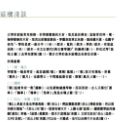
- A Brief Introduction to the Structure of the Qin
This article written by Tong Wan-hoi examines the illustrations found in the Qing Dynasty publication Yuguzhai Qinpu (Yuguzhai Qin Handbook), the Zhongni style qin called "Hundun", and the unfinished qin, to provide a brief introduction to the basic structure of the qin and the nomenclature of its various parts.
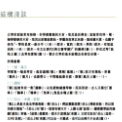
- An Introduction to Qin Notation
This article written by Chung Siu-sun, Sunny is an introduction to Qin Notation.
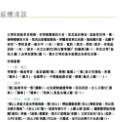
- The Development of Qin Strings and Two Revivals of Silk Strings in Modern Times
This article written by Wong Shu-chee reviews the development of string-making in ancient China and two revivals of silk strings in modern times.
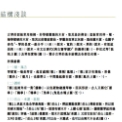
- Sound Analysis of Longitudinal Vibrations of Qin Strings
The production of sound from the string is a physical phenomenon, the properties of the string as well as the characteristics of its sound production can be investigated from a physical perspective. This article written by Tse Chun-yan and Wong Chun-fung is focused on sound analysis of longitudinal vibration and how physical properties of the strings affect the tone.
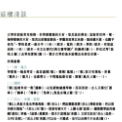
- Traditional Method of Making Qin Strings in China
This article, wriiten by Wong Shu-chee, introduces nine steps of traditional method of making qin strings in China: choosing the silk, bundling the silk, combining the threads, forming the strings, boiling the strings, rinsing the strings, drying the strings in the sun, cutting the strings, winding the strings.
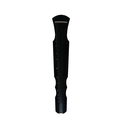
- Dongxiao (1)
This qin, named Dongxiao, was made in Northern Song Dynasty (960-1127) and was acquired by Lee Chun-yuen, Otto. The photo shows the front of Dongxiao in Fuxi style.
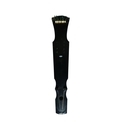
- Dongxiao (2)
This qin, named Dongxiao, was made in Northern Song Dynasty (960-1127) and was acquired by Lee Chun-yuen, Otto. The photo shows the back of Dongxiao in Fuxi style.
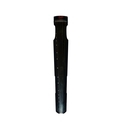
- Qiushui (1)
This qin, named Qiushui, was made in Ming Dynasty (1368-1644) and was acquired by Ng Ying-wai in the 1990s. The photo shows the front of Qiushui in Zhongni style.
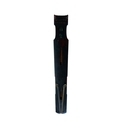
- Qiushui (2)
This qin, named Qiushui, was made in Ming Dynasty (1368-1644) and was acquired by Ng Ying-wai in the 1990s. The photo shows the back of Qiushui in Zhongni style.
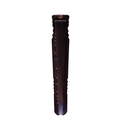
- Langshiquan (1)
This qin is named Langshiquan and was acquired by Lee Chun-yuen, Otto. The photo shows the front of Langshiquan in Lianzhu style.
Copyright © 2012 Hong Kong Memory. All rights reserved.
| Set Name |





